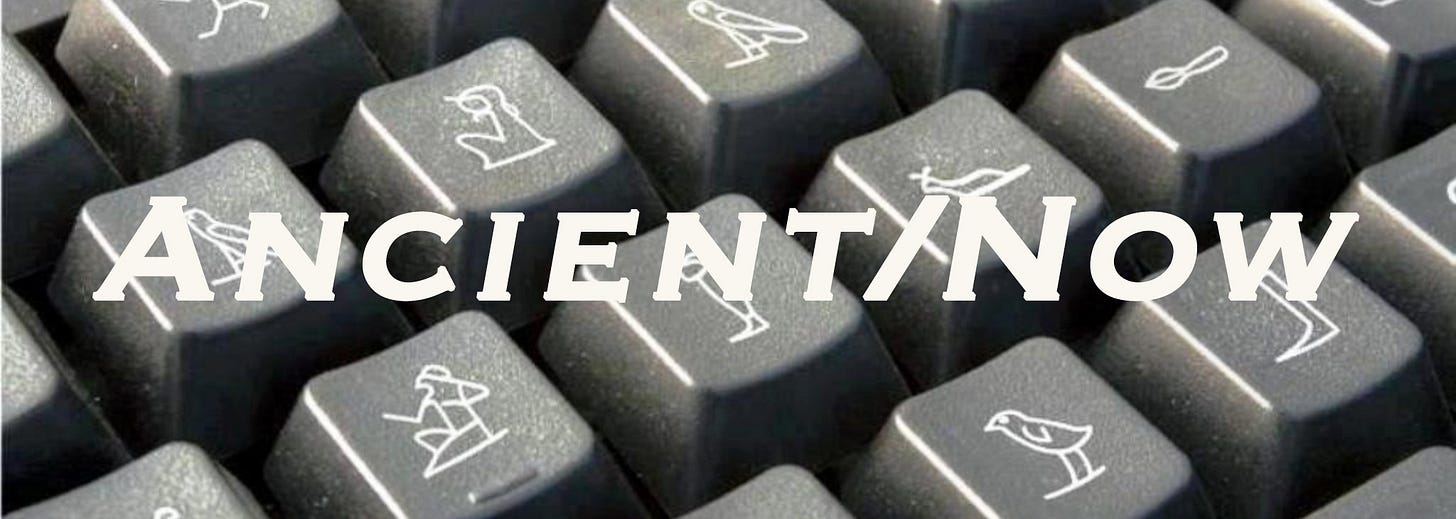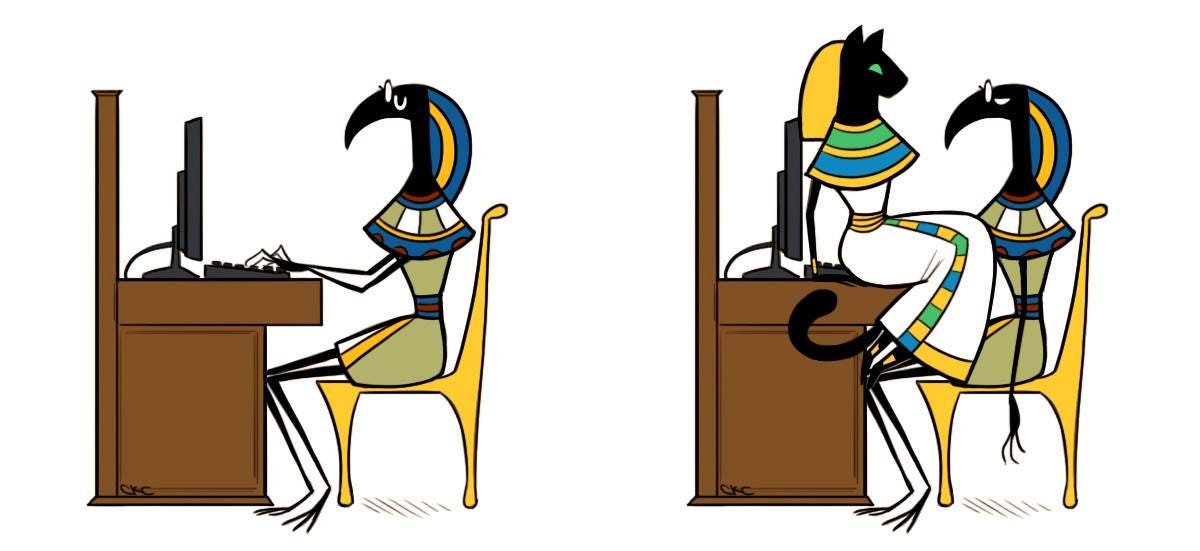Ancient/Now - February 1st
A young ancient Egyptian woman's mummy reveals she died giving birth to twins
A young woman’s mummy reveals she died giving birth to twins

Childbirth was/is an event just as likely to extinguish life as to create it, a rite of passage when lives rest on the knife’s edge, mother and baby existing within that liminal space between life and death. While we can never know just how many ancient Egyptian women died giving birth, the mass of pertinent religious rituals, magical practices, and spiritual protections for which we have archaeological evidence help us understand the profound hopes and fears with which the Egyptians confronted the event.
A new study by George Washington University anthropology professor Francine Margolis and medical examiner David R. Hunt published last month used new technology to reveal previously unknown details about the mummy of an ancient Egyptian woman who died very young—aged bioarchaeologically to 14-17 years—giving birth to twins. Dated to the Late Dynastic/Coptic period, the young woman’s mummy was originally uncovered in 1908 excavations by the Metropolitan Museum of Art and the Egyptian government at a site known as El Bagawat in the Kharga Oasis.
Unfortunately, the attitudes and practices surrounding the treatment of human remains in the early twentieth century are not what they are today and, rather than preserve the mummy intact, archaeologists unwrapped and partially dissected it shortly after excavation in order to determine a cause of death. At some point the mummy’s head—wrested from the mummy during rough examination—was lost. Despite this invasive handling of the young woman’s mummy, current technology is allowing new researchers to learn more about the circumstances of her death. The initial conclusion of child birth as the young woman’s cause of death was based on the discovery of a fetus’s head lodged in the birth canal (the rest of the fetal remains were placed between the woman’s legs). However, using noninvasive techniques like CT scanning technology, Margolis and Hunt were able to go beyond a physical examination of the remains. Prior to this study, the conclusion regarding cause of death was that the young woman died because of a breech birth (the baby presented feet-first, and the head became stuck in the birth canal), but it turns out that this was not the whole story. A CT scan revealed the remains of another fetus, this one located in the upper left chest cavity. Exactly how it got there we can’t be sure, but the authors suggest that the fetal remains may have migrated into the chest as the mummified organs decomposed and liquified inside the body, or perhaps the fetus was mummified and then placed back inside the body in the chest area at the time of death. Or perhaps the mummification process itself pushed the fetus into the upper abdomen.
Although the precise details surrounding this young woman’s death will always elude us, technology provides us with a deeper, more poignant understanding of the circumstances surrounding her death. Her mummy provides a rare documented case in which childbirth can be named as the cause of death. As the authors write,
Childbirth in ancient Egypt was considered a religious event, not a medical one. While medicine in ancient Egypt is well documented, pregnancy is not. Most of the documentation discovered describes spells and incantations recited to protect the mother and baby during and after birth.
Although we don’t have a lot of discussion of pregnancy in the ancient Egyptian sources, a Third Intermediate Period oracular amuletic decree offers protection from delivering twins:
We shall (cause her) to conceive male children and female children. We shall keep her safe from a Horus-birth, from an irregular birth and from giving birth to twins. (Töpfer, 2014, p. 326)
Women facing the dangers and uncertainties of pregnancy, childbirth, and postpartum recovery in the ancient world did so without the benefit of modern technologies and knowledge of science. In a horrific irony, at a time when we have the ability to make pregnancy and childbirth as safe as it has ever been in human history, it is more dangerous to be pregnant now in the United States than it has been in the last fifty years thanks to laws denying women the right to reproductive care, the criminalization of miscarriage, and the compounding impact of racial, ethnic, economic, and educational disparities that pervade our healthcare system. Given this reality, it is hard to avoid a disturbing question: If this young ancient Egyptian woman pregnant with twins was alive today in America, would the outcome have been any different?
If you would like to read more about how ancient people faced the dangers of childbirth, here is an oracular amulet decree written for a woman from the collection of the Institute for the Study of Ancient Cultures (formerly the Oriental Institute) in Chicago.







